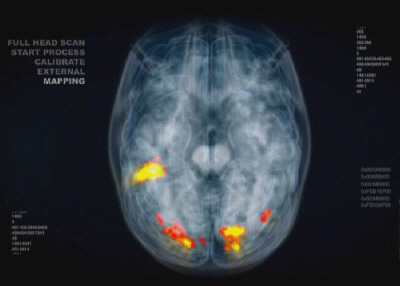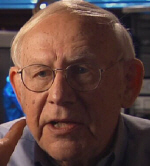George Widener
A Prodigious Savant
Date Genius

George Widener
Give George Widener any date in history and he can, within seconds, tell you what day of the week it was. At his home in Asheville, North Carolina, George works into the night drawing elaborate calendars. Before bed he reads, not a novel but, printed sheets of population figures.
Numbers follow George wherever he goes, he finds comfort in them, he considers them his friends. George says no-one ever taught him to calculate calendars. In fact, he insists he's not calculating at all.
George's skill is phenomenal, but it comes at a cost. He suffers from a form of autism, a brain disorder that leads to awkwardness and social isolation.
As a child, school was a place of fear and dread, but a chance encounter at his grandmother's house when he was seven changed his life. He met another child who was fascinated with his grandmother's calendar. Today, George is perhaps the world's greatest calendar calculator, but he is not unique. He belongs to a select group of people known as savants
Psychologist Darold Treffert has studied savants for over forty years. He says: "A savant, by definition, is somebody who has a mental handicap of some sort with, what I call, an island of genius". Savant skills come in a spectrum:
- Splinter Skills those gifted in memorising licence plates and sports trivia
- Talented Savant those with a conspicuous skill in relation to their handicap
- Prodigious Savant those whose skill would be spectacular even if seen in a normal person
The achievements of prodigious savants are all the more remarkable given the handicap they often carry. Kim Peek is physically and mentally disabled but, he can read 500 pages a minute and has memorised 9,000 books. Leslie Lemke and Derek Paravicini are both blind and mentally disabled but can play back a piece of music after hearing it only once. Daniel Tammet can perform incredibly complex mathematics in his head and can learn new languages in a very short period of time.
How do prodigious savants like George do what they do? As recently as a decade ago, scientists could only guess. But now, the latest technology allows them to probe more deeply.
Top neurologist, Joy Hirsch, is going to try and discover which regions of George's brain are activated when he does his extraordinary maths. While scanning his brain, Hirsch will present him with a new question every four seconds. Some he must read from a monitor, other he will listen to on headphones; the experiment lasts an hour.
Incredibly, Hirsch discovers that George's brain, while structurally normal, is mysteriously ablaze with activity in unexpected areas while he's calculating dates. Three of these areas are normally used to recognise words, shapes and to initiates movement. Why George uses the motor areas of his brain to do his maths is unclear, the results hint that George has an unusually organised brain, but Hitsch needs more proof before she can conclude that he is, indeed, wired differently.
Since the average person cannot do what George can do, Hirsch devises a second test that, pretty much, anyone can do, to see exactly where his brain is different. She asks him to name pictures of everyday objects. This time, what Hirsch discovers is extraordinary.

Language and Vision Centres
These are the language and vision areas of the brain that most people would use to describe everyday objects. Shockingly, George's brain shows no activity in these areas.
If Hirsch's results are any indication, then savants like George, do indeed, have brains that are wired differently. But, her significant discovery poses a new question. How do the brains of savants become mis-wired in the first place? Some believe that savants are born with their astonishing skills.

Darold Treffert
For Darold Treffert, the story of how savants brains emerge begins inutero as the brains two hemispheres battle for supremacy. The hemispheres generally perform different functions. The left id considered dominant in language and logical thinking, the right in art, maths and musical abilities; the domain of savants. In the foetal brain, the right hemisphere will often finish its development ahead of the left. This leaves the left susceptible to a host of agents that can disrupt brain function. The lead culprit, Treffert believes, is the male hormone testosterone. He tells us: "In the developing foetus, the levels of testosterone reaches the same levels as an adult male". Treffert believes that in rare cases the flood of testosterone can interfere with the assembly of brain's neural circuitry resulting in a tangle of mis-wired connections.
With the left hemisphere compromised, the right compensates. In this way, the savant is free from the normally dominant logical influence of the left giving freer reign to the creative right. In keeping with this theory, George possesses other unusual abilities associated with the right hemisphere. He is an exceptional artist, he has an enhanced appreciation of detail and a draughtsman's ability to record it.
It's not just brain impairment at birth that brings about savant skills. There's powerful evidence that brain damage can trigger the release of hidden talents much later in life. Tommy McHugh is one such case.
CREDITS: The above information came from the UK Channel 5 "My Brilliant Brain" documentary series.
Further Reading:
|
|
|
Extraordinary People: Understanding Savant Syndrome - Darold Treffert |
|
|
|
Blackstock's Collection: Drawings of an Artistic Savant - Gregory Blackstock |
